#it’s a purposeful narrative technique!
Explore tagged Tumblr posts
Text
y’all can hate me if you want but incest is one of the only universal taboos across cultures and its violation triggers a deep-seated revulsion and intrigue that can be employed to great effect in fiction. it immediately sets the mood. it grabs the readers attention. it demands interrogation, a deeper engagement with the material. it’s always a shock and memorable. and even when it’s only hinted at, our acculturation means it always catches our eye, like someone entering a still classroom twenty minutes late, and then we doubt ourselves, because did they just? surely not. it throws the rest of the narrative in a sharper relief as you look harder for evidence for or against automatically. It’s a VERY useful tool to tell a story and it works on so many levels and you can go ewwww take it away 0 stars all you want but people knew this before they knew to wipe their asses to not die of cholera and they’re gonna continue writing stories where people fuck their brothers and have babies with their moms because even if you close the book in disgust you’re going to remember it!
#incest is only there for the shock. yes#so what.#it’s a purposeful narrative technique!#and it’s done in SO many stories#yes you were meant to see dean and Sam as lovers a little. yes the roy siblings act like jilted lovers.#all those things are the equivalent of putting glitter on your cheekbones to attract attention.#god there’s something forbidden and disgusting happening here I MUST see#I MUST unearth#even if it doesn’t exist you’ve still a dug a hole haven’t you. you’ve still gotten invested.#i would argue batman and Robin too.#I admire novelists because they have balls and just make them actually fuck#it’s like adding yolk
16 notes
·
View notes
Text
The Art of Flashbacks: Using Past Events to Enrich Your Story
In the tapestry of storytelling, the past is not a forgotten thread but a vibrant color that infuses depth and meaning into the narrative. Flashbacks are the writer’s brushstrokes, allowing the past to be a living part of the present story. However, the art of using flashbacks goes beyond mere chronological shifts. It involves a thoughtful, deliberate process of weaving past events into the…
View On WordPress
#Character Psychology#Character-Centered Flashbacks#Crafting Flashbacks#Emotional Resonance#Flashback Purpose#Flashback Transitions#Flashback Triggers#Flashbacks in Writing#Memory and Meaning#Memory and Time#Narrative Complexity#Narrative Techniques#Past Events in Fiction#Sensory Details#Story Enrichment#Storytelling Craft#Theme Echoes#Unreliable Memory#Writing Tips
0 notes
Text
“What is the difference between Orphic and Homeric Hymns?”
The Orphic and Homeric hymns are both significant in the context of ancient Greek literature and religion, but they differ in origin, purpose, and style.
1. Origin and Tradition:
- Homeric Hymns: These hymns are attributed to Homer, though they were likely composed by various poets in the 7th and 6th centuries BCE. They are part of the broader tradition of epic poetry and are generally seen as a way to honor the gods through narrative and invocation.
- Orphic Hymns: These hymns are tied to the Orphic tradition, which is associated with the mythical figure Orpheus. The Orphic hymns date from later periods (around the 3rd century BCE to the 3rd century CE) and reflect a more esoteric and philosophical approach to religion.
2. Content and Themes:
- Homeric Hymns: Each hymn typically praises a specific deity, recounting myths or stories related to their attributes, powers, and deeds. They often serve a liturgical purpose, meant to invoke the favour of the gods.
- Orphic Hymns: These often incorporate themes of mysticism, cosmology, and the soul's journey. They focus more on personal religious experience and metaphysical concepts, such as the nature of the divine and the afterlife.
3. Style and Structure:
- Homeric Hymns: They generally follow a narrative structure and employ traditional epic techniques, such as invocation and epithets. The language is grand and formal.
- Orphic Hymns: While also poetic, these hymns tend to use a more lyrical and mystical language, emphasizing philosophical ideas. The structure can be less consistent than that of the Homeric hymns.
While both types of hymns celebrate the gods, the Homeric hymns are more concerned with storytelling and invocation in a traditional epic style, whereas the Orphic hymns delve into mystical and philosophical themes, reflecting a different aspect of religious belief.
If I missed anything or messed anything up please let me know, I am up to hear about your opinions / knowledge on this too ^^
#hellenic pagan#hellenic polytheism#hellenic polythiest#hellenism#hellenistic#homeric hymns#orphic hymn#paganism
883 notes
·
View notes
Text
Tips for Fight scenes #1
Consider how each character's personality, background, and motivations would influence their fighting style and tactics. A character who is impulsive might rush into a fight without thinking, while a more strategic character might carefully plan their moves. Use the fight scene as an opportunity to reveal hidden depths or conflicts within the characters.
Take advantage of the surroundings to add dynamism to the fight. Characters can use objects in the environment as weapons or shields, or they might use the terrain to gain tactical advantages. Think about how the setting could influence the flow of the fight and make it more engaging for the reader.
Describe the sights, sounds, smells, and sensations of the fight to immerse the reader in the action. Instead of just focusing on the physical movements of the characters, bring the scene to life by painting a vivid picture of the entire sensory experience. For example, describe the metallic tang of blood in the air or the adrenaline-fueled pounding of the characters' hearts.
Ensure that the fight scene serves a purpose beyond just showcasing action. It should advance the characters' emotional journeys or the overall plot of the story. Consider how the outcome of the fight will impact the characters and their relationships, and use it as a catalyst for further developments in the narrative.
Don't limit yourself to traditional weapons or fighting styles. Research different martial arts, historical combat techniques, and improvised weapons to add variety and authenticity to your fight scenes. Think about how each character's unique skills and resources would shape their approach to combat.
Use pacing, suspense, and foreshadowing to build tension leading up to the fight. Hint at the conflict to come, then gradually escalate the stakes as the scene unfolds. Consider incorporating moments of uncertainty or doubt to keep the reader guessing about the outcome.
Every character should have strengths and weaknesses that come into play during the fight. These vulnerabilities could be physical, emotional, or psychological, and they should add depth and complexity to the conflict. Think about how each character's flaws or insecurities might be exposed under pressure.
Show the aftermath of the fight and the impact it has on the characters and the world around them. This could include physical injuries, emotional trauma, or changes in the balance of power between characters or factions. Use the fallout from the fight to drive further conflicts and developments in the story.
#writing#writer on tumblr#writerscommunity#writing tips#character development#oc character#writing advice#writing help#creative writing#writing scenes#fight scene
1K notes
·
View notes
Text
Master Dialogue Writing Techniques for Engaging Fiction (For Writers)
(Beware, long post!)
As fiction writers, we all know that effective dialogue is essential for bringing our stories and characters to life. After all, the way our protagonists, antagonists, and supporting players speak to one another is one of the primary ways readers get to know them on a deep, intimate level. Dialogue reveals personality, uncovers motivation, and propels the narrative forward in a way that felt narration simply can't match.
But nailing natural, compelling dialogue is easier said than done. It's a craft that takes serious skill to master, requiring writers to have a keen ear for authentic speech patterns, a nimble handle on subtext and implication, and the ability to strike that delicate balance between being true to real-world conversation while also keeping things snappy, dynamic, and laser-focused on the story at hand.
If you're someone who struggles with crafting dialogue that truly sings, never fear. In this in-depth guide, I'm going to dive deep into the techniques and best practices that will help you elevate your dialogue writing to new heights. By the end, you'll have a toolbox full of strategies to ensure that every exchange between your characters is as gripping, revealing, and unforgettable as possible.
The Fundamentals of Effective Dialogue
Before we get into the more advanced nuances of dialogue writing, let's start by covering some of the foundational principles that all great fictional conversations are built upon:
Reveal Character One of the primary functions of dialogue is to give readers a window into who your characters are as people. The way they speak — their word choices, their tone, their body language, their turns of phrase — should provide vivid insight into their personalities, backgrounds, values, quirks, and emotional states.
Think about how much you can glean about someone just from how they communicate in real life. Do they use a lot of slang and shorthand? Are they verbose and flowery with their language? Do they struggle to make eye contact or fail to respond directly to questions? All of these subtle linguistic cues are powerful tools for crafting multi-dimensional characters.
Drive the Plot Forward While revelations about character are crucial, you also want to ensure that your dialogue is constantly pushing the story itself forward. Each exchange should feel purposeful, moving the narrative along by introducing new information, triggering plot points, creating conflict, or prompting characters to make pivotal decisions.
Dialogue that feels aimless or extraneous will ultimately bore readers and detract from the forward momentum of your story. Every line should have a clear intent or function, whether it's uncovering a hidden truth, setting up a future complication, or escalating the tension in a high-stakes moment.
Establish Distinct Voices In a story featuring multiple characters, it's crucial that each person has a clearly defined and differentiated way of speaking. Readers should be able to tell who's talking just from the rhythm, diction, and personality of the dialogue, without any additional context clues.
This doesn't mean every character has to have an over-the-top, hyper-stylized way of communicating. In fact, the most effective character voices often feel grounded and natural. But there should still be distinct markers — whether it's word choice, sentence structure, tone, or speech patterns — that make each person's voice instantly recognizable.
Convey Subtext While the literal words being spoken are important, great dialogue also traffics heavily in subtext — the unspoken emotional undercurrents, power dynamics, and hidden agendas that simmer beneath the surface of a conversation.
The most compelling exchanges happen when characters are communicating on multiple levels simultaneously. Perhaps they're saying one thing out loud while their body language and tone convey a completely different sentiment. Or maybe they're engaged in a subtle war of wits, trading verbal jabs that reveal deeper wells of resentment, attraction, or vulnerability.
Mastering the art of subtext is key to creating dialogue that feels layered, lifelike, and imbued with dramatic tension.
Strategies for Writing Snappy, Realistic Dialogue
Now that we've covered the foundational principles, let's dive into some specific techniques and best practices that will take your dialogue writing to the next level:
Omit Unnecessary Details One of the biggest mistakes many writers make with dialogue is bogging it down with too much extraneous information. In real life, people rarely speak in perfectly composed, grammatically correct full sentences. We stumble over our words, interrupt each other, trail off mid-thought, and pack our speech with filler words like "um," "uh," and "you know."
While you don't want to go overboard with mimicking that messiness, you should aim to strip your dialogue of any overly formal or expository language. Stick to the essentials — the core thoughts, feelings, and information being exchanged — and let the subtext and character voices do the heavy lifting. Your readers will fill in the gaps and appreciate the authenticity.
Master the Art of Subtext As mentioned earlier, crafting dialogue that's rich in subtext is one of the keys to making it feel gripping and lifelike. Think about how much is often left unsaid in real-world conversations, with people dancing around sensitive topics, conveying hidden agendas, or engaging in subtle power struggles.
To layer that sense of unspoken tension into your own dialogue, consider techniques like:
• Having characters contradict themselves or say one thing while their body language says another
• Utilizing loaded pauses, interruptions, and moments of uncomfortable silence
• Injecting subtle sarcasm, skepticism, or implication into a character's word choices
• Allowing characters to talk past each other, missing the unspoken point of what the other person is really saying
The more you can imbue your dialogue with that layered, emotionally-charged subtext, the more it will resonate with readers on a deeper level.
Establish Distinct Voices As mentioned earlier, ensuring that each of your characters has a clearly defined and differentiated speaking voice is crucial for great dialogue. But how exactly do you go about accomplishing that?
One effective strategy is to give each person a unique set of verbal tics, idioms, or speech patterns. Maybe one character is prone to long-winded, flowery metaphors, while another speaks in clipped, efficiency-minded sentences. Perhaps your protagonist has a habit of ending statements with questioning upticks, while the sarcastic best friend always punctuates their barbs with an eye roll.
You can also play with differences in diction, syntax, and even accent/dialect to further distinguish how your characters communicate. The key is to really get to know the unique personality, background, and psychology of each person — then let those elements shine through in how they express themselves.
Lean Into Conflict and Confrontation When it comes to crafting gripping dialogue, conflict is your friend. The most compelling exchanges often arise from characters butting heads, engaging in verbal sparring matches, or working through deep-seated tensions and disagreements.
Conflict allows you to showcase the high stakes, unresolved needs, and deeper emotional currents that are driving your characters. It forces them to make bold choices, reveals aspects of their personalities that might not otherwise surface, and generates the kind of dramatic tension that will really hook your readers.
Of course, you'll want to avoid making every single dialogue scene a full-blown argument. But learning to sprinkle in well-placed moments of friction, confrontation, and clashing agendas is a surefire way to elevate the energy and impact of your character interactions.
Read Your Dialogue Out Loud One of the most valuable tricks for ensuring your dialogue sounds natural and lifelike is to read it aloud as you're writing. Hearing the words out loud will quickly expose any clunky phrasing, overly formal grammar, or inauthentic rhythms that would otherwise go unnoticed on the page.
Pay close attention to how the dialogue rolls off your tongue. Does it have a smooth, conversational flow? Or does it feel stilted and unnatural? Are your characters' unique voices shining through clearly? Are there any spots where the back-and-forth starts to drag or feel repetitive?
Actively listening to your dialogue — and making adjustments based on how it sounds in the real world — is an essential part of the writing process. It's one of the best ways to refine and polish those character interactions until they feel truly alive.
Hopefully, this can help you all!
The key is to always keep your focus on authenticity. Ask yourself: how would real people actually speak?
Hey fellow writers! I'm super excited to share that I've just launched a Tumblr community. I'm inviting all of you to join my community. All you have to do is fill out this Google form, and I'll personally send you an invitation to join the Write Right Society on Tumblr! Can't wait to see your posts!

#writing#thewriteadviceforwriters#writeblr#creative writing#writing tips#on writing#writers block#how to write#writers and poets#writers on tumblr#authoradvice#author#fiction#indie author#writer#publishing#book writing#book quote#bookblr#books#writing advice#fiction writing#writing blog#writing tools#writing resources#novel writing#writer community#fantasy novel#readers#reading
881 notes
·
View notes
Text
Book recs: Queer science fiction, part 1
There is a lot of queer sf out there, and I read a lot of sf. When I started working on this list, I quickly realized it was impossible to include all that I've read and enjoyed in one single rec post. Thus, this is the first of so far three queer sci-fi book rec posts.
A note: queer here does not necessarily mean "guarantee of an f/f or m/m ship with a happy ending", but rather simply a significant presence of queerness. Some of the books feature no romance but has a same gender attracted/trans/a-spectrum lead, or features an m/f relationship with bisexual, trans or aro/ace characters, or simply features a world-building which is heavily queer inclusive in ways that don't always compare to our own ideas of sexuality and gender. I have however disqualified works where the only queer presence is along the lines of "gay best friend" or a blink and you'll miss it confirmation that never comes up again.

Previous book rec posts:
Really cool fantasy worldbuilding, really cool sci-fi worldbuilding, dark sapphic romances, mermaid books, vampire books, many worlds: portal fantasies, many worlds: alternate timelines, robots and artificial intelligences, post- and transhumanism, alien intelligences
For more details on the books, continue under the readmore. Titles marked with * are my personal favorites. And as always, feel free to share your own recs in the notes!

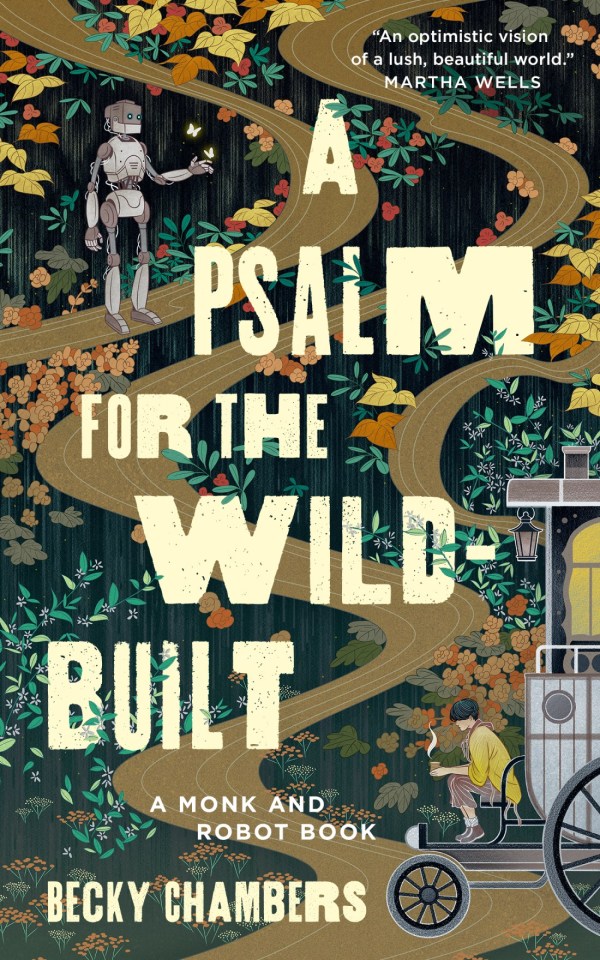

The Light Brigade by Kameron Hurley*
Dietz is a soldier in the war between Earth and Mars - to travel to the battle front, she and her fellow soldiers are broken down into light to be able to quickly travel across space. But something keeps going wrong with Dietz's travels; her memories don't match up with the mission briefs, as she experiences time itself turning in on itself. Is she going mad? Or are the things she's learning skipping through time the truth - and the war that's stealing her life the lie? A mindfuck of a book that's scathing in its critique of fascism and war. Features a sapphic lead but no romance.
A Psalm for the Wild-Built (Monk and Robot duology) by Becky Chambers
Novella. Long ago, robots, upon gaining sentience, simply laid down their work and walked into the wilderness. Long after, a tea monk looking for purpose follows after them into the wilds, where they come across one of the robots seeking its own sort of answers. While not plotless, this story focuses more on character and vibes over plot. Also has a nonbinary main character and features conversations on gender between human and robot.
Meet Me In Another Life by Catriona Silvey*
Thora and Santi are strangers, brought together by a coincidence and torn apart just as abruptly when tragedy strikes. But this is neither the first nor the last time they meet - again and again they encounter each other, as friends, lovers, enemies, family, every time recognizing in each other a familiarity no one else carries. But with every new life, a mysterious danger grows ever closer, forcing them to find out the truth of their connection. This is a puzzle-box of a story that goes some entirely unexpected places in a very wild ride, featuring a bisexual co-lead.
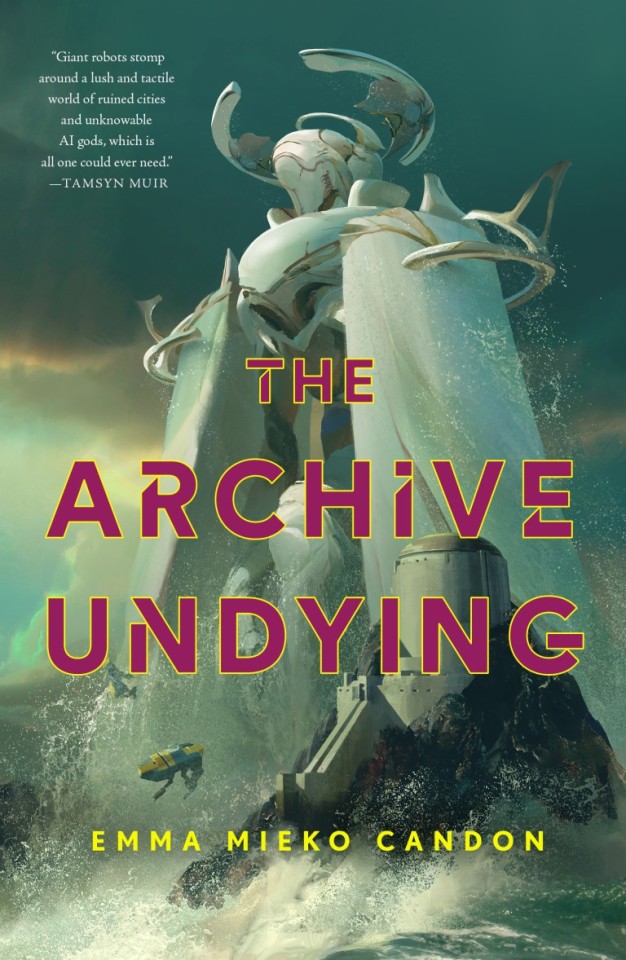

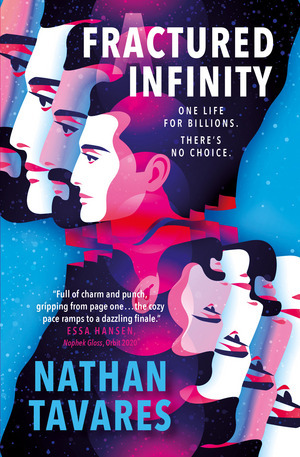
The Archive Undying (The Downworld Sequence) by Emma Mieko Candon
In a world where AI gods sometimes lose their minds and take entire populations down with them, Sunai was the only survivor when his god went down. In the 17 years since, he has wandered on his own, unable to either die or age, drowning his sorrows in drink and men. But his attempts to flee his past comes to a stop as he is forced back into the struggle between man and machine. Featuring some pretty wild world building and narrative techniques, this book will definitely confuse you, but it is worth the experience.
The Paradox Hotel by Rob Hart
January Cole works security at the Paradox Hotel, last stop for tourists heading for the timeport, which allows them to travel to and witness any moment in time. But years of proximity to the timeport has left its damage on January, making her unstuck in time, letting her relive memories of her dead lover even as her sanity slips away bit by bit. As she starts witnessing proof of a horrible crime in the hotel that no one else can see, January must race against her own mind, a killer, and time itself to solve it before it's too late.
A Fractured Infinity by Nathan Tavares
Hayes Figueiredo is a struggling film-maker who wants to finish his documentary, whose life gets turned upside down when handsome physicist Yusuf Hassan enters his life, claiming an alternate version of him is a great inventor who’s sent a mysterious device to their universe. As Hayes gets drawn deeper into the conspiracy - and his feelings for Yusuf intensify - he has to decide just how far he’s prepared to go to win the life and the love he wants. Featuring a very gay and very morally dubious lead, this is a creative and strange read.


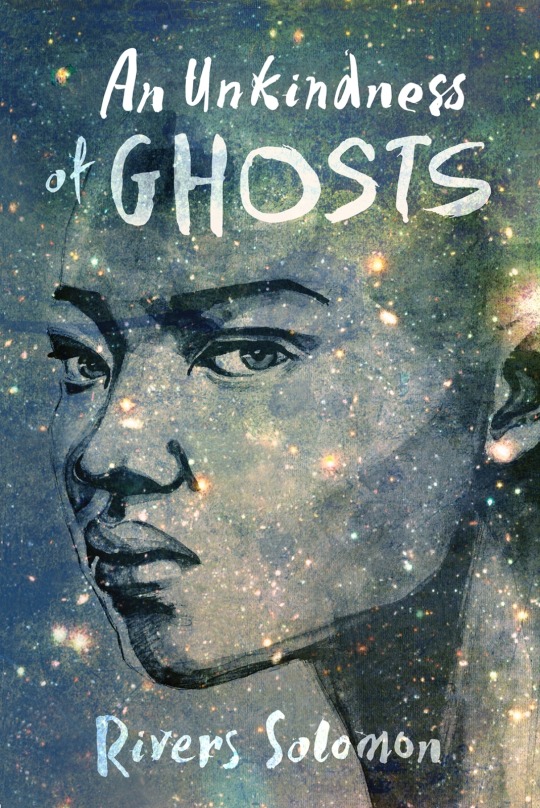
Bridge by Lauren Beukes
When she was little, Bridge and her mother Jo used to play a game - one where they traveled to other worlds, inhabiting the bodies of their other selves. Now Jo is dead, and as Bridge is cleaning out her apartment she finds a strange device: a dreamworm, the very thing that supposedly makes inter-dimensional travel possible. Suddenly faced with the possibility that multiverse travel is real, Bridge is struck by a different question: could her mother still be alive? Scifi spiced with a healthy dose of body horror and some absolutely wild twists, Bridge also features a bisexual lead (however this is a blink and you’ll miss it moment) and a nonbinary co-narrator.
The Long Way to a Small, Angry Planet (Wayfarers series) by Becky Chambers
Rosemary Harper just got a job on the motley crew of the Wayfarer, a spaceship that works with tunneling new wormholes through space. With a past she wants to leave behind, Rosemary is happy to travel the far reaches of the universe with the chaotic crew, but when they land the job of a life time, things suddenly get a lot more dangerous. A bit of a tumblr classic in its day, this is a cozy space opera with an episodic feel and vividly realized characters and cultures. While pretty light on romance and focusing found family, there is a main f/f relationship.
An Unkindness of Ghosts by Rivers Solomon
Life on the lower decks of the generation ship HSS Matilda is hard for Aster, an outcast even among outcasts, trying to survive in a system not dissimilar to the old antebellum South. The ship's leaders have imposed harsh restrictions on their darker skinned people, using them as an oppressed work force as they travel toward their supposed Promised Land. But as Aster finds a link between the death of the ship's sovereign and the suicide of her own mother, she realizes there may be a way off the ship.
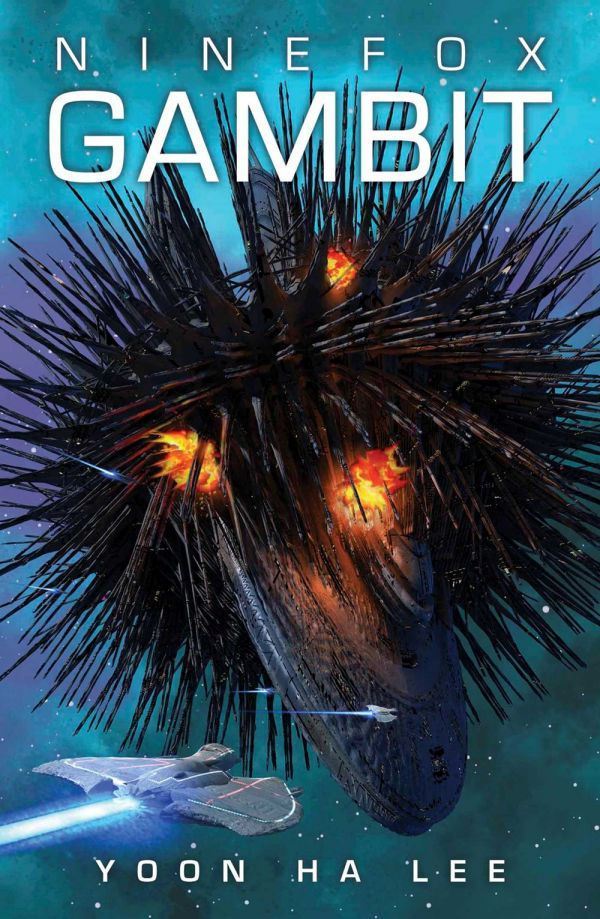
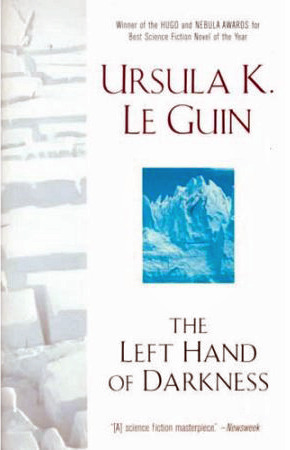
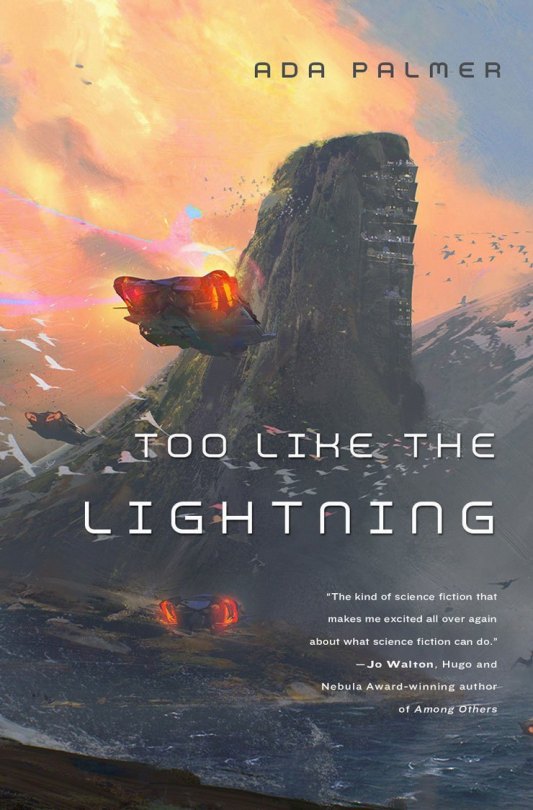
Ninefox Gambit (The Machineries of Empire trilogy) by Yoon Ha Lee*
Military space opera where belief and culture shape the laws of reality, causing all kinds of atrocities as empires do everything in their power to force as many people as possible to conform to their way of life to strengthen their technology and weapons. It’s also very queer, with gay, lesbian and trans major characters, albeit little to no romance.
The Left Hand of Darkness (Hainish Cycle) by Ursula K. Le Guin
1969 classic. Genly Ai is an emissary sent to the planet of Winter, meant to help facilitate Winter's inclusion in a growing intergalactic civilization. But he's unprepared for Winter's citizens, who spend much of their time genderless or switching between genders, making for a culture wildly different from that Genly is used to.
Too Like the Lightning (Terra Ignota series) by Ada Palmer*
Centuries in the future, humanity has deliberatly engineered society to be as utopian as possible, politically, socially, sexually, religiously. Written in an enlightenment style and featuring questions of human nature and whether it’s possible to change it, and what price we’re prepared to pay for peace, this book is simultaneously very heavy and very funny, and written in a very unique style. While still human, the society presented often feels starkly alien.
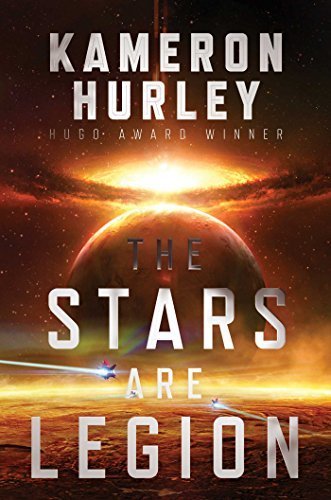
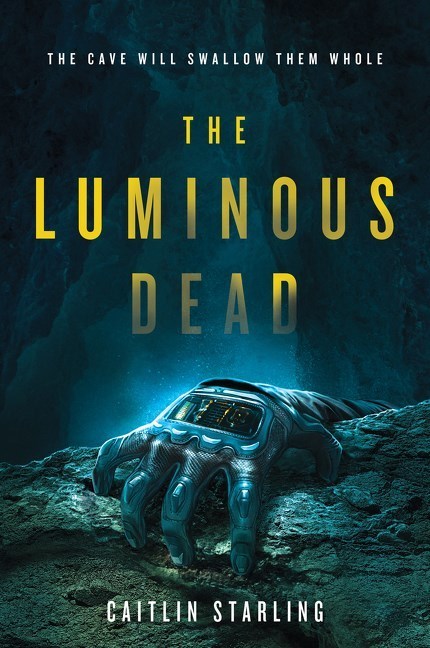
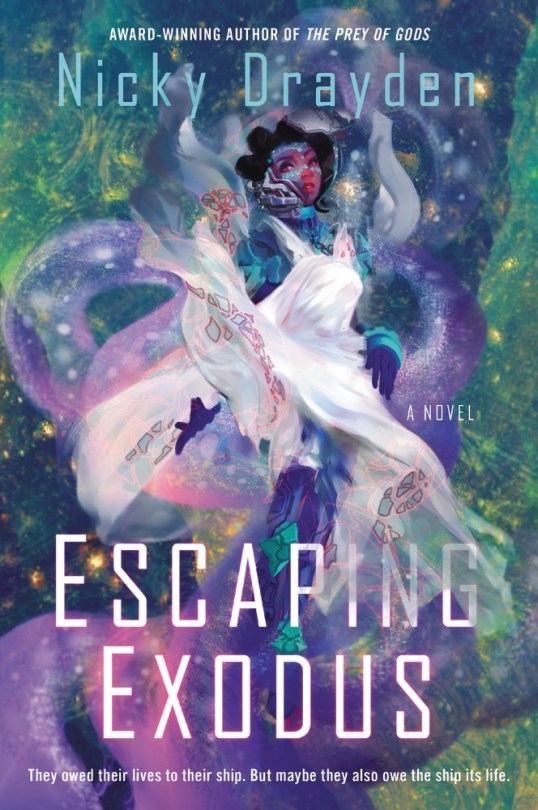
The Stars Are Legion by Kameron Hurley
This book fucked me up when I read it. It’s weird, it’s gross, there’s So Much Viscera, there are literally no men, it has living spaceships and biotech but in the most horrific way imaginable. Had I to categorize it I would call it grimdark military sf. It’s an experience but not necessarily a pleasant one.
The Luminous Dead by Caitlin Starling*
Possibly one of the most unsettling books I’ve ever read, and definitely the most claustrophobic. Gyre, a caver on an alien planet, ventures into the dark and dangerous underground, guided only by a woman who has no compunctions on using and manipulating Gyre as she sees fit to obtain her secretive goals down in the caves.
Escaping Exodus (Escaping Exodus series) by Nicky Drayden
While my feelings on Escaping Exodus were mixed, it cannot be denied that the dynamic between the two leads and the way they go from childhood best friends to enemies on different sides of a class and power struggle is very delicious. It also features some really cool worldbuilding of living, alien generation spaceships and the human culture that has developed inside them.
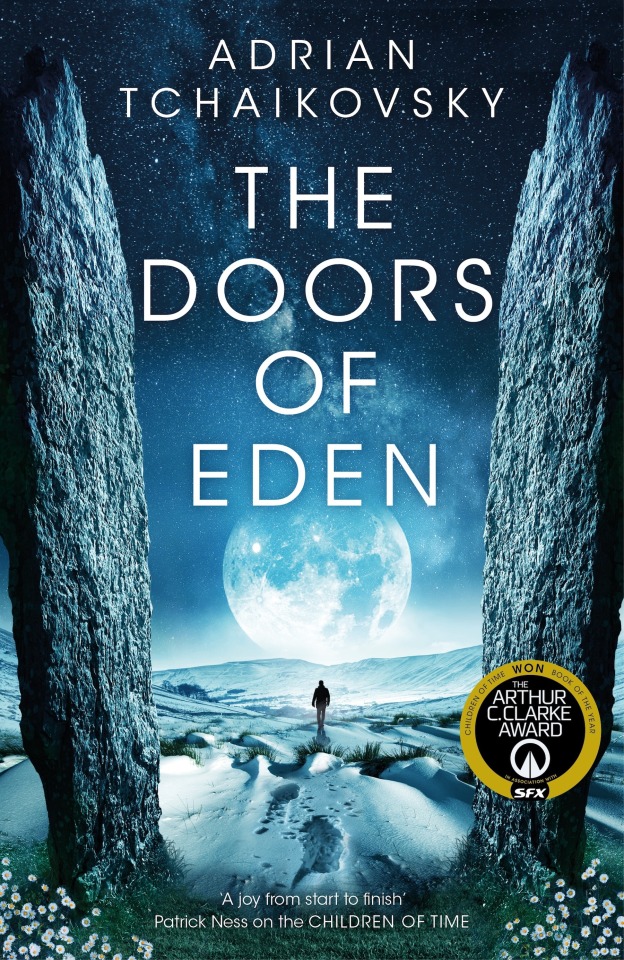
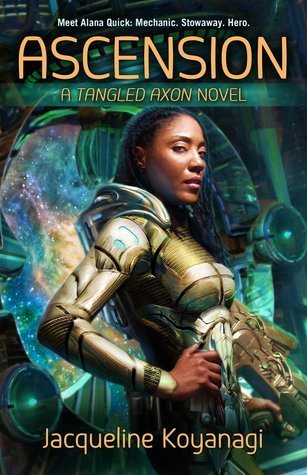
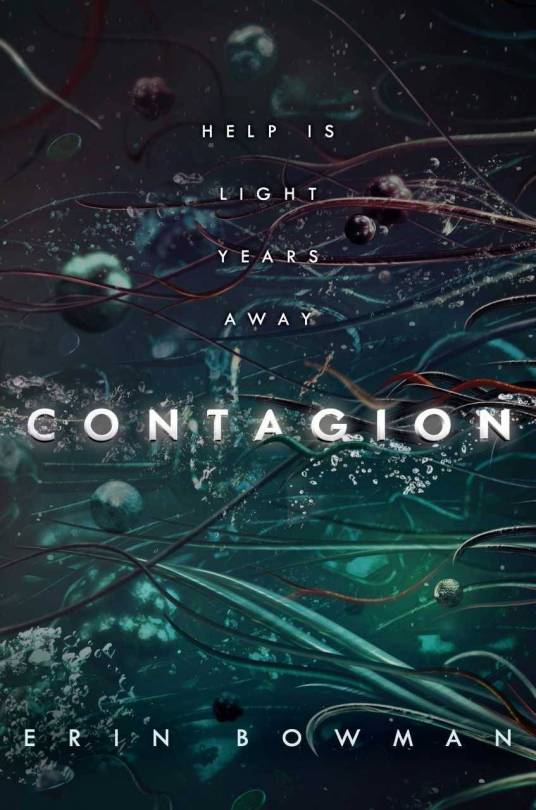
The Doors of Eden by Adrian Tchaikovsky*
The Doors of Eden is something of an experiment in speculative biology, featuring versions of Earth in which various different species were the one to rise to sentience, from dinosaurs to neanderthals. Now, something is threatening the existence of all timelines, dragging multiple different people and species into the struggle, among those a pair of cryptid hunting girlfriends and a transgender scientist.
Ascension by Jacqueline Koyanagi
Ascension follows Alana Quick, an expert Sky Surgeon who stows away on a spaceship in hopes of landing herself a job. But the ship and its crew are in deeper waters than she expected, facing threats emerging from a whole other universe, all of them searching for the same person: Alana’s spiritually enlightened sister. Undeniably a bit of an odd read, Ascension is also very creative and features polyamorous lesbian relationship.
Contagion (Contagion duology) by Erin Bowman*
Young adult. After receiving an SOS, a small crew is sent on a standard search-and-rescue mission. But what they find are not survivors awaiting help, but an abandoned site, full of dead bodies and crawling with something... monstrous. No romance, but features one sapphic co-lead and one who can easily be read as demisexual (however this doesn't show up until book two, which has more romance).

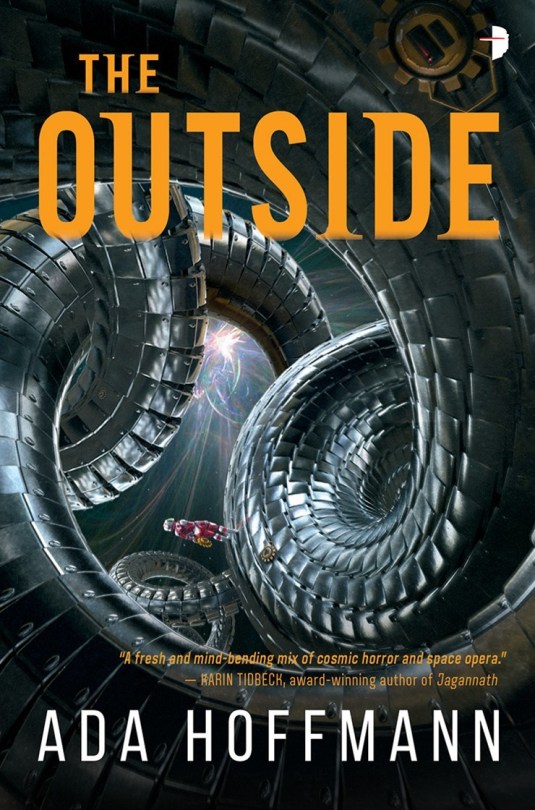
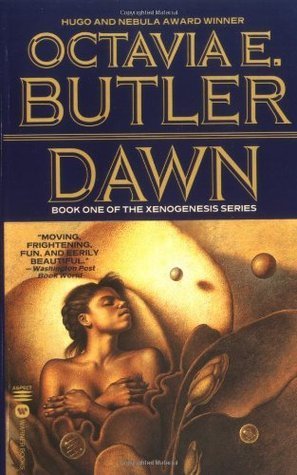
A Memory Called Empire (Texicalaan duology) by Arkady Martine
Mahit Dzmare is an ambassador sent to the center of the multi-system Teixcalaanli Empire, where she discovers that her predecessor has died. Trying to protect her home, an independent mining station, from being taken over by the empire, Mahit struggles to find out the truth of her predecessor's death while carrying the voice of his ghost in her head, guiding her as best he can. Light on the romance but does feature a sapphic relationship.
The Outside (The Outside trilogy) by Ada Hoffman*
AKA the book the put me in an existenial crisis. Souls are real, and they are used to feed AI gods in this lovecraftian inspired scifi where reality is warped and artifical gods stand against real, unfathomable ones. Autistic scientist Yasira is accused of heresy and, to save her eternal soul, is recruited by post-human cybernetic ‘angels’ to help hunt down her own former mentor, who is threatening to tear reality itself apart. Sapphic main character.
Dawn (Xenogenesis trilogy) by Octavia E. Butler*
After a devestating war leaves humanity on the brink of extinction, survivor Lilith finds herself waking up naked and alone in a strange room. She’s been rescued by the Oankali, who have arrived just in time to save the human race. But there’s a price to survival, and it might be humanity itself. Absolutely fucked up I love it I once had to drop the book mid read to stare at the ceiling and exclaim in horror at what was going on. Queer in the sense that the Oankali doesn't follow human ideas of gender and relationships, which is mirrored in their romantic relationships with humans. It is, however, pretty dark, with examinations of agency and consent, so enter with caution.
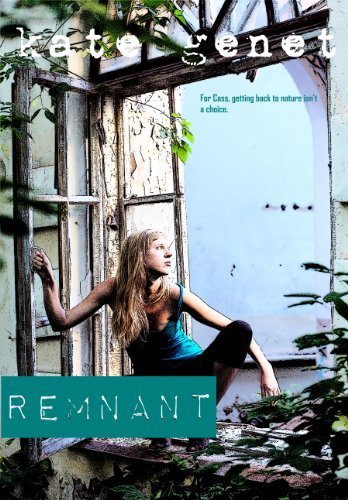

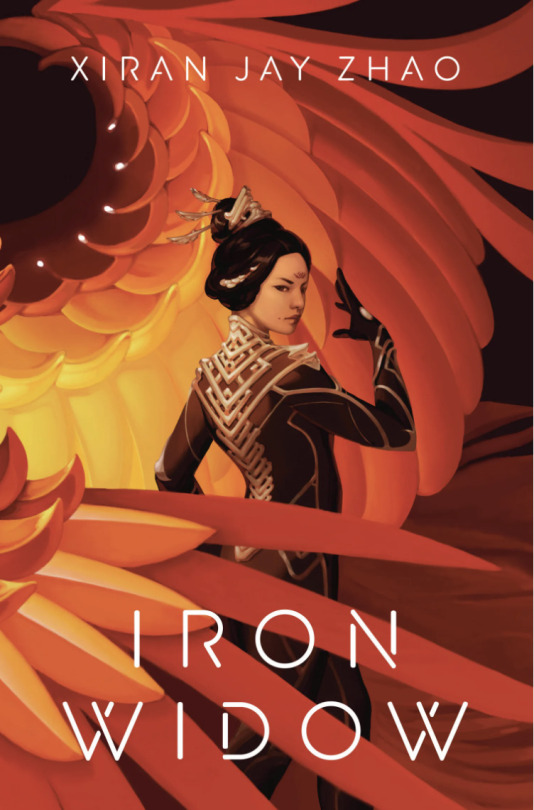
Remnant by Kate Genet
One day, Cass wakes up and finds everyone else is gone. Not dead, just gone, leaving her in a world which nature starts taking back with a dangerous, unnatural speed. But as she tries to survive this new normal, Cass realizes she may not be alone after all - but who else is out there, and are they a threat?
The Scorpion Rules (Prisoners of Peace duology) by Erin Bow*
Young Adult. Featuring a dystopian future in which an AI forcibly keeps world peace by holding the children of world leaders hostage. If anyone attempts to start a war, their child will be executed. Greta is one of these children, kept in a school with others like her. But things start to change one day when a new, less obedient hostage arrives. A unique, slowburn take on the YA dystopian craze, also featuring a bisexual love triangle.
Iron Widow (Iron Widow series) by Xiran Jay Zhao
Young adult. Zetian is a citizen of Huaxia, where mecha aliens are constantly trying to breach the Great Wall. To keep them at bay, couples of men and women pilot so called Chrysalises, giant transforming robots. But the pilots are not equal - the women almost always die, sucked dry by their co-pilots. When Zetian sets herself up to become a concubine-pilot, she does so with the plan to assassinate the male pilot who caused her sister's death. Features a polyamorous main relationship.
Bonus AKA I haven't read these yet but they seem really cool:
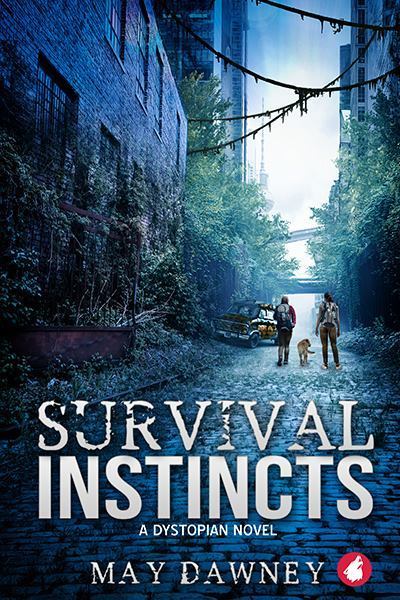
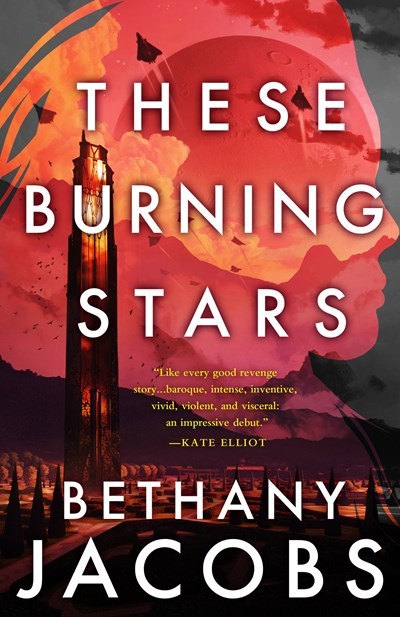

Survival Instincts by May Dawney
Lynn Tanner has been surviving the post-apocalypse alone with only her dog for a long time, trusting no one. But when she's forced to travel the dangerous remains of New York City alongside another woman, her priorities are challenged. Is staying alone really the best way to stay alive?
These Burning Stars by Bethany Jacobs
When con-artist Jun Ironway gets her hands on possible proof of the powerful Nightfoot family, controllers of interplanetary travel, committing genocide, she has in her hands a chance of taking them and their monopoly down. But the family and their allies won't go down easily, and sends two brutal clerics to stop her.
Everfair by Nisi Shawl
A neo-victorian alternate history, in which a part of Congo was kept safe from colonisation, becoming Everfair, a safe haven for both the people of Congo and former slaves returning from America. Here they must struggle to keep this home safe for them all.
#nella talks books#the light brigade#a psalm for the wild built#meet me in another life#the archive undying#the paradox hotel#fracture infinity#bridge#the long way to a small angry planet#an unkindness of ghosts#ninefox gambit#the left hand of darkness#terra ignota#the stars are legion#the luminous dead#escaping exodus#the doors of eden#the outside#xenogenesis#remnant#the scorpion rules#iron widow#survival instincts#these burning stars#everfair
959 notes
·
View notes
Text
Writing Notes: Freewriting

Freewriting - the practice of writing without a prescribed structure, which means no outlines, cards, notes, or editorial oversight.
In freewriting, the writer follows the impulses of their own mind, allowing thoughts and inspiration to appear to them without premeditation.
Benefits of Freewriting
CREATIVE EXPRESSION
Many writers embrace freewriting as a way to find unexpected inspiration.
Outlines and notes can be wonderful for the purpose of staying on task, but they can sometimes stifle the creativity that comes from free association.
This is where freewriting comes in.
By starting with a rough idea, but without pre-planned details, a writer opens themself up to discovery and new found inspiration.
WRITER'S BLOCK
Writers who feel in a style rut, or who actively experience writer’s block, may benefit from a freewriting exercise as part of their formal writing process.
By forcing themselves to put words on a page, a writer may be able to alleviate their anxiety about writing and allow them to be more creative.
SPEED
Freewriting is typically faster than other forms of draft writing or outlining.
Because you are simply writing without a strict form to follow and without organizing your thoughts.
5 Tips and Techniques for Freewriting
JUST WRITE
Any writing coach or writing teacher will tell you that you must segregate your writing process from your editing process.
When it comes to freewriting, first drafts are repositories for every idea that comes to mind, however vague or tangential.
Don’t worry about word count, don’t worry about market viability, don’t worry about sentence structure, don’t even worry about spelling.
Unleash your creativity, let the ideas flow, and trust that there will be time for editing later.
This rule applies whether you wish to write a novel, a play, a short story, or a poem.
GATHER TOPICS BEFOREHAND
Freewriting doesn’t mean you write without having an idea about your topic/story.
Even the most committed freewriters tend to have some degree of a prewriting technique - they ruminate on their subject matter in a broad, general sense.
You don’t have to pre-plan details before you start writing, but it helps to know in the broadest sense what it is you think you’ll write about.
TIME YOURSELF
If you are experiencing writer’s block, commit to getting words down on the page within the first 60 seconds of writing.
Perhaps those first words will not yield anything, but think of them metaphorically as the first drops you put into the five gallon bucket that is your novel.
There is nothing to be gained by staring at a page or computer screen for any great period of time.
COMBINE FREEWRITING WITH TRADITIONAL OUTLINES OR NOTES
While it can be quite satisfying to say that one wrote an entire novel using freewriting techniques (as Jack Kerouac is said to have done with On the Road) what readers care about most is the quality of your writing.
With this in mind, start a project with a substantive freewriting session.
Depending on what you produce, you may want to use that content as fodder for a formal process that more closely conforms to the traditional rules of writing (outlines, notes, etc.).
Let that outline or set of notes guide the remainder of your writing on the project.
Remember, too, that you can always toggle back to freewriting at any point.
BRING IDEAS TO YOUR SESSIONS
Some writers, particularly poets, begin sessions with no ideas or themes they plan to tackle—they simply begin writing with the first word or phrase that comes to mind, and then they let the process unfold from there.
While you can work toward this point, if you’re new to the medium of writing and are seeking to unleash the writer within, plan your freewriting sessions when you have a strong idea of your story or theme.
The most effective writing has thematic or narrative consistency, and starting with a small germ of an idea may help you achieve that consistency.
Source ⚜ Writing Notes & References
#free writing#on writing#writing tips#writeblr#spilled ink#dark academia#writing reference#writing advice#writing inspiration#creative writing#writer's block#writing exercise#writing ideas#literature#writers on tumblr#poets on tumblr#writing prompt#poetry#adélaïde labille-guiard#writing resources
170 notes
·
View notes
Note
Hi, I was wondering if you could so some sort of rule set for time travel? I'm finding it hard to describe, and what rules there are on the subject.
Thanks!
Hello, I'm also writing a time traveling sci-fi fiction with a fantasy blend to it and here are some things that I find that could help us out!
Rule Set for Creating Believable Time-Traveling Fiction
1. Time Travel Mechanics
Mechanism Description
- Clearly explain how time travel works in your story. Is it a machine, a natural phenomenon, a magical object, or an innate ability?
Scientific Basis
- Incorporate real scientific theories, such as Einstein’s theory of relativity, wormholes, or quantum mechanics, to ground your story in plausible science.
Limitations and Costs
- Define the limitations of time travel, such as distance in time, frequency, energy requirements, or physical toll on the traveler.
2. World-Building
Historical Accuracy
- Research and accurately depict the time periods your characters travel to. Include cultural norms, language, technology, and major events of those eras.
Parallel Worlds and Timelines
- Decide if time travel in your story creates alternate timelines or if it follows a single, mutable timeline. Consistency is key.
Temporal Organization
- Consider the existence of a governing body or organization that regulates time travel. Define its structure, rules, and purpose.
3. Language and Communication
Temporal Dialects
- Characters from different time periods should speak differently. Use historical dialects, slang, and accents appropriate to each era.
Temporal Jargon
- Create specific terms and jargon for time travelers and the technology they use, such as “temporal jump,” “chrononaut,” or “time anchor.”
Code of Conduct
- Develop a code of conduct or set of guidelines that time travelers must follow, including how they communicate with each other and with people from different eras.
4. Character Development
Motivations and Goals
- Clearly define why characters want to time travel. Is it for adventure, to change a personal event, or for scientific exploration?
Personal Growth
- Show how time travel affects characters emotionally and psychologically. Do they struggle with the ethics of their actions or the loneliness of being out of their time?
Conflict and Tension
- Use the potential for paradoxes, rival time travelers, and moral dilemmas to create conflict and tension.
5. Ethical and Moral Implications
Paradox Prevention
- Address how your story handles paradoxes, such as the grandfather paradox. Use concepts like self-healing timelines or fixed points in time to explain inconsistencies.
Ethical Dilemmas
- Explore the moral implications of time travel. Should characters intervene in historical events? What are the consequences of changing the past Responsibility
- Emphasize the responsibility that comes with the power to alter time. Characters should consider the broader implications of their actions.
6. Plot Structure
Non-Linear Narrative
- Use non-linear storytelling techniques to enhance complexity and intrigue. Flashbacks, flash-forwards, and parallel timelines can create a rich narrative.
Foreshadowing and Payoff
- Plant clues and foreshadowing that pay off later in the story. Ensure that all plot threads are resolved by the end.
Multiple Perspectives
- Consider telling the story from multiple viewpoints to show the impact of time travel from different angles.
7. Integrating Science Fiction and Fantasy Elements
Scientific Plausibility
- Ground your time travel mechanics in plausible science, even if you incorporate fantastical elements. Use pseudo-scientific explanations to bridge the gap.
Imaginative Enhancements
- Blend scientific theories with imaginative elements, such as ancient artifacts, alien technology, or supernatural forces.
Explanatory Dialogue
- Use character dialogue to explain complex concepts in an accessible way without overwhelming the reader with technical details.
8. World-Building Consistency
Timeline Integrity
- Map out key events in your story’s timeline to avoid inconsistencies and plot holes.
Cultural and Societal Impact
- Consider how time travel affects society. Is it a well-known and regulated practice, or a secret known only to a few?
Technological and Historical Changes
- Explore how changes in the past affect technology and history in the present and future. Ensure these changes are logically consistent.
9. Avoiding Common Pitfalls
Avoid Overcomplication
- Keep the rules of time travel simple enough for readers to follow without getting bogged down in excessive technical detail.
Plot Holes
- Be vigilant about potential plot holes and inconsistencies that can arise from complex time travel mechanics.
Exposition Balance
- Balance the need to explain time travel mechanics with maintaining the story’s pace and engagement. Avoid info-dumping.
Rules for Time Traveling
1. One-Way Trips Only
Restriction
- Time travelers can only move forward or backward in time once without the possibility of a return journey.
Explanation
- This rule ensures that the timeline remains linear and prevents paradoxes caused by multiple interactions with the same time period.
Effect
- Limits interference with historical events and reduces the chance of creating alternate realities.
2. The Observer Effect
Restriction
- Time travelers cannot interact with their past selves or directly influence their previous actions.
Explanation
- Direct interaction with one’s past self could create paradoxes, such as the “grandfather paradox,” where altering past events prevents the traveler’s existence.
Effect
- Maintains the integrity of the timeline and ensures personal history remains consistent.
3. Fixed Points in Time
Restriction
- Certain historical events, known as fixed points, cannot be changed or altered in any way.
Explanation
- These events are crucial for the stability of the timeline and the universe’s structure.
Effect
- Prevents catastrophic changes to reality, ensuring key moments in history remain intact.
4. Memory Corruption
Restriction
- Excessive time travel can lead to memory corruption, where the traveler starts forgetting crucial details of their original timeline.
Explanation
- The brain struggles to handle multiple versions of events, leading to cognitive dissonance and memory loss.
Effect
- Ensures travelers use time travel sparingly and only when absolutely necessary.
5. Temporal Anchor
Restriction
- Time travelers must establish a temporal anchor, a fixed point in time to which they can return or stabilize themselves.
Explanation
- This anchor serves as a safeguard against getting lost in time or drifting uncontrollably through different periods.
Effect
- Provides a safety net for travelers, ensuring they have a way back to their original timeline or a stable reference point.
6. Butterfly Effect
Restriction
- Minor changes in the past can have significant, unforeseen consequences in the future.
Explanation
- The butterfly effect illustrates how small actions can ripple through time, drastically altering future events.
Effect
- Encourages travelers to be cautious and minimize their impact on past events to avoid unintended consequences.
7. Temporal Energy Consumption
Restriction
- Time travel requires a significant amount of energy, often depleting the traveler’s resources or affecting the environment.
Explanation
- The energy needed to manipulate time is immense, and its usage can lead to resource shortages or environmental damage.
Effect
- Ensures time travel is not undertaken lightly and that travelers consider the environmental and resource costs.
8. Chrono-Sickness
Restriction
- Prolonged exposure to different time periods can cause physical and mental ailments, known as chrono-sickness.
Explanation
- The human body and mind are not designed to handle the stress of moving through time, leading to disorientation, nausea, and psychological effects.
Effect
- Limits the duration and frequency of time travel, encouraging travelers to minimize their trips.
9. Temporal Interference
Restriction
- Time travelers must avoid interfering with major historical figures or events.
Explanation
- Interfering with significant events or individuals can drastically alter the course of history, leading to unpredictable outcomes.
Effect
- Preserves the natural flow of history and ensures major events occur as intended.
10. Temporal Paradoxes
Restriction
- Travelers must avoid creating paradoxes, situations where actions in the past contradict the present or future.
Explanation
- Paradoxes can destabilize the timeline, potentially leading to its collapse or the creation of alternate realities.
Effect
- Ensures travelers act responsibly and with caution, preventing actions that could lead to paradoxical situations.
***
Hello, I’m Kali The Plot Mage!
I am a STEM college student who's a writer at heart, I’ve found a unique way to support my creative journey and myself at the same time-- I create and sell writer templates on Etsy, designed to help fellow writers like you bring your stories to life.
I’m excited to share my latest Writer Template, which has already received stellar 5-star reviews from satisfied users. This template is a labor of love, crafted to assist writers in every stage of their creative process. It includes:
- Worldbuilding Worksheets: Includes political, cultural, historical, and economic aspects of your world.
- Series Support: Ideal for authors working on multi-book sagas.
- Lifetime Use: Buy it once, and you’ll have it forever.
- Easy Navigation: Designed with a user-friendly interface for a seamless workflow.
- In-Depth Character Sheets: Develop complex and unforgettable characters.
- Information Hub: Centralize all your worldbuilding details in one place.
- Writer Tool Repository: Access the best writing tools from around the web.
- Guided Writer Tasks: From idea generation to book publishing, we’ve got you covered.
I believe in the power of storytelling and the magic of creating worlds that captivate readers. If you’re looking to enhance your writing process and bring your stories to life, I invite you to check out my template which you can find here.
For a limited time, I’m offering a 75% off coupon, so don’t miss out on this opportunity! Click the link to discover more and take your writing to the next level.
Experience the joy of writing with a tool designed to inspire and support you every step of the way. Build your world. Inspire your readers.
Thank you for your support, and happy writing! 😊






#writer#writing#writer things#writerblr#writerscorner#writing inspiration#writing tips#author#writers and poets#ao3 writer#sci fi and fantasy#scifi#science fiction#writeblr#writing inspo#writing resources#creative writing#writer stuff#writers on tumblr#writers community#writers block#writing help#world building#writing in progress
173 notes
·
View notes
Text
Ten must-read books for writers (or anyone, really.)
By Writerthreads on Instagram
Obviously this list is highly subjective and based on my research and personal experience. Please share your favourite books as well!!
1. To the Lighthouse by Virginia Woolf
Woolf is the queen of the stream of consciousness and a master at diving into characters' inner thoughts, conveying complex emotions, themes and perspective. Her prose is breathtaking, her character memorable.
2. Beloved by Toni Morrison
Morrison tackles difficult themes with poise like no other, diving into topics like grief, trauma, and identity. Read this book to learn how to develop multi-layered narratives whilst maintaining perfect pacing and a intricate narrative structure.
3. The Great Gatsby by F. Scott Fitzgerald
A masterpiece. Sharp social commentary, eloquent prose and vivid imagery... what more can you want from a book? Every word was chosen for a purpose, and it shows the importance of restraint in writing.
4. The Lord of the Rings by J. R. R. Tolkien
Tolkien's legendary fantasy world-building makes his series a staple in fantasy literature. The geography, cultures and histories in his works are well-crafted. Anyone trying to build a complex world can learn from from this series.
5. Mrs. Dalloway by Virginia Woolf
Our second Woolf classic in this list! Mrs. Dalloway is a masterclass of a perfect character study. Woolf weaves different viewpoints intricately, capturing the essence of human experience.
6. Pride and Prejudice by Jane Austen
Austen character development is legendary, showcasing complex, evolving characters like Elizabeth Bennet and Mr. Darcy. The novel’s witty dialogue show insight into personality and societal norms, and her narrative voice and well-structured plot keeps readers hooked to the very end.
7. Never Let Me Go by Kazoo Ishiguro
Ishiguro’s novel presents a quietly devastating exploration of memory, identity, and humanity through a dystopian lens. The subtle, restrained prose and profound emotional impact illustrate how to weave complex themes into a seemingly simple narrative.
8. The Seven Husbands of Evelyn Hugo by Taylor Jenkins Reid
This book made me cry so very hard. The author explored themes like identity and fame, while creating an engaging and multi-layered plot that had me hooked. Reid’s vivid prose showcases techniques for creating emotionally resonant and storytelling that allows readers to feel for the characters.
9. One Hundred Years of Solitude by Gabriel Garcia Marquez
Márquez’s masterpiece provides a gorgeous, profound exploration of magical realism. Its intricate narrative and richly imagined world blends fantastical elements with real-world themes into something unique and breathtaking.
10. Wuthering Heights by Emily Bronte
Brontes exploration of dark themes, framed within a dark and brooding narrative, makes it the quintessential gothic read. It's emotionally intense, complex in structure, and definitely memorable, perfect for any budding writer dabbling in dark academia, modern gothic literature, horror, etc.
And here's my rather shoddy list from a non-English major who reads too much! And Sorry for the lack of accents on the required letters, I haven't figured out how to add them on my laptop. Please give me a general opinion on my book recs and whether they're good, or if you have more suggestions! Lots of love.
#books#book recs#booklr#writing#writers on tumblr#writing tips#writing advice#teen writer#writeblr#writers#writing inspiration#creative writing#virginia Woolf is a god#mr darcy is the best love interest in romance history#books and libraries#reading#book reviews
174 notes
·
View notes
Note
Trick or treat!
thank you very much for hammering on my door, anon. i didn't love the costume, though, so you're getting the scariest thing i can think of...
in defence of won-won and lav-lav
the inspiration for which came from the following anon:

obviously, ron and lavender are not, in the eyes of the text, a ship we are supposed to root for.
the doylist text treats the relationship as a semi-punishment for ron - something intended to chastise him [notice, for example, how he and lavender are frequently described in the narrative as being laughed at by other students] for the crime of being so rude to hermione [and dismissive of her desire for him] in the opening half of the book.
and, specifically, to chastise him for being immature - and for being unable to express his feelings for hermione in any sort of sophisticated way. his relationship with lavender is the final stage of the arc which begins in goblet of fire when he fails to ask hermione to the yule ball - in which his approach towards his attraction to her is petulant and childish and he doesn't "deserve" to be with her until he's resolved it.
ron being poisoned - and calling out for hermione on his sickbed - begins a different narrative arc which continues throughout deathly hallows, in which ron is shown to be attentive, compassionate, chivalrous, and so on, until he proves himself worthy of hermione by remembering that slaves exist and gets his girl.
lavender serves - then - as the anti-hermione. she's the final boss of ron's flop era, stopping him from moving on to his true love. and he knows it - hence him getting the ick when lavender does such unreasonable things as "call snape a cunt" - and longs to extract himself from her clutches, but she's such a powerful force of teenage cringe that he can't.
until harry adds a little liquid luck to the mix, that is.
the watsonian text lacks the overt sense that ron and lavender's relationship is a punishment, but its view on the two of them as a couple is broadly aligned with the doylist narrative.
harry is aware that ron and hermione fancy each other, and he doesn't deviate from this opinion even after ron and lavender start going out - his view [which ron does nothing to disabuse him of] is that ron's attraction to lavender is purely physical, that they have nothing in common and don't really talk to each other, and that ron wants to break up with lavender but doesn't know how. he also makes no effort to include lavender in his friendship group [instead, he regards her as something which prevents him from enjoying hanging out with ron] or to get to know anything about her beyond "likes divination" and "parvati's friend".
ron and lavender's relationship also serves the secondary purpose - in both the doylist and watsonian texts - of laying the groundwork for harry and ginny getting together in the latter stages of half-blood prince.
[which some readers might otherwise feel had come out of nowhere... although i do actually disagree with that assessment.]
the emphatic presentation of ron and lavender as embarrassing, superficial, horny teenagers is a narrative device which enables both harry and the text to insist that his attraction to ginny is the complete opposite: not just a flash-in-the-pan teenage romance, but a mature, profound, passionate, sophisticated, end-game love story. the text has locked in on ginny as mrs potter the second she's rude about ron and lavender's kissing technique.
and so the fact that lavender brings something very important - and very positive - to ron's character development is often overlooked.
ron's defining character trait is that he's someone who feels a great need to prove himself. this contributes both to his positive and negative characteristics - it's why he's daring, loyal, and brave, but it's also why he's disinclined to take initiative, prone to sulking, and a bit of a show-off.
and it's also why he feels jealousy very profoundly.
ron's jealousy - like most people's - is rooted in a sense of insecurity. he's jealous of the attention harry gets because he's worried that nobody will ever think he's so impressive [which also connects to him being worried that he's the least-loved of his siblings]. he's jealous of hermione's relationship with viktor krum because he's worried that he could never command hermione's attention in such a way. he's so easy for the locket-horcrux to manipulate because he thinks it's self-evident that - as the apparition of hermione says - nobody would ever prefer him over the boy-who-lived.
this narrative arc concludes with ron learning to move beyond his insecurity - something the epilogue lampshades by having him quip that the crowds gawking at harry are really there for him. he stabs the locket, banishing the physical manifestation of his insecurities, becomes proactive about communicating his feelings for hermione, and acknowledges that his belief that harry's life is cool and swashbuckling is a fantasy, and that true heroism is often hard and boring.
harry and hermione are - unsurprisingly - key figures in this journey of self-discovery.
but so is lavender.
there seems to be a common view in this fandom that hermione is the most emotionally literate and most mature of the trio. this former view is plainly nonsensical [if any of them have the emotional range of a teaspoon, it's little miss "why are you upset your rabbit's dead?"...] and the latter always seems, to me, to be based in essentialist stereotypes about girls being more sensible and maturing faster than boys, instead of the idea that hermione - specifically - has a more diligent and rule-oriented personality than harry and ron.
[i'm always struck by how hermione is - in many ways - the most child-like of the trio. deathly hallows begins with harry clearing his trunk of the ephemera of childhood so he can pack for his mission. hermione's packing involves taking her schoolbooks along as comfort items...]
as a result, the fact that hermione and ron behave equally as petulantly towards each other before their end-game arc begins is often overlooked. he tends to cope with feeling insecure by lashing out at other people's insecurities [i.e. when he does the impression of her bouncing up and down in her chair and makes her cry because she laughs at him] and so does she [i.e. her zeroing in on ron's lack of confidence in his quidditch abilities when she says she's attracted to "really good quidditch players"]. he acquits himself badly when it comes to krum, she reacts in exactly the same way [scoffing, sulking, giving the silent treatment, casting aspersions on the object of his affection's character etc.] to his crush on fleur.
lavender - in contrast - just likes ron. there's nothing deeper going on. she just thinks he's hot and funny and she wants to be around him. harry may see her attraction to ron as ridiculous and embarrassing, but she doesn't. she wants to snog him in the middle of the dining hall - fuck what anyone else thinks!
and this experience - of being uncomplicatedly adored, of being thought wonderful without "wonderful for the average person, of course, not wonderful by the standards of harry potter/international quidditch superstar viktor krum/the slug club" being tacked on the end - is good for ron. it improves his self-esteem [harry takes the piss out of him looking pleased with himself when lavender laughs at his jokes etc., but part of why harry is so gagged is that these moments don't conform to the standard of harry being the person people notice first - or, indeed, exclusively] and allows him to begin to see himself as someone who's worthy of being desired as he is.
and this helps him move beyond expressing his jealousy through sulking and cruelty - at bill and fleur's wedding, for example, he is still jealous of the idea that krum is attracted to hermione, but he responds to this proactively by asking her to dance with him, instead of [as he does at the yule ball] doing nothing to express that he wants to spend time with her and then blaming her for not reading his mind - which then leads into his arc across deathly hallows of moving beyond jealousy entirely.
i don't - though - see ron and lavender lasting if the canon end-game pairings are deviated from. harry's observation that ron and lavender don't have anything in common beyond physical attraction is demonstrably correct. harry's view that lavender wouldn't mesh well with the trio [or with him and ginny as a couple] is harsher, but also true.
but nor do i think we should want them to last.
this is something i say a lot, but fandoms in general are really bad at thinking about romantic relationships which aren't epic love stories - which is unsurprising, since the media from which fandoms spring is exactly the same.
we're bad at recognising that one night stands which don't turn into anything, or second love, or friends-to-lovers-to-friends-again, or "this lasted six weeks and neither of us were sad when it ended", or "i'm sixteen and i want to kiss this fit boy, i'm not going to marry him!" still trigger character growth. a high-school relationship which makes everyone in a ten-foot radius cringe might not last - and nor should it! - but it can still be transformative.
lavender transforms ron's life. there is no romione without her.
[and nor is there any of the locket getting stabbed, so take note, ronmort nation.]
and she deserves our respect.
88 notes
·
View notes
Text
Chapter endings are your story's heartbeat, pulsing with anticipation and excitement
Each conclusion should be a crescendo, leaving readers breathless and eager for more. Infuse your cliffhangers with purpose, ensuring they serve the narrative and deepen the stakes. Whether you unveil a shocking truth, unleash a devastating betrayal, or introduce a new, ominous threat, the cliffhanger should be a masterstroke, propelling the story forward with irresistible momentum. Use this technique to craft an irresistible narrative rhythm, hooking readers at every turn. Leave them hanging, craving resolution, and they'll follow you eagerly to the next chapter, hungry for the next thrill.
#writing tips#writing advice#writers on tumblr#writeblr#creative writing#fiction writing#writerscommunity#writing#writing help#writing resources
197 notes
·
View notes
Text
5 Essential Tips for Mastering Scene Writing in Your Novel
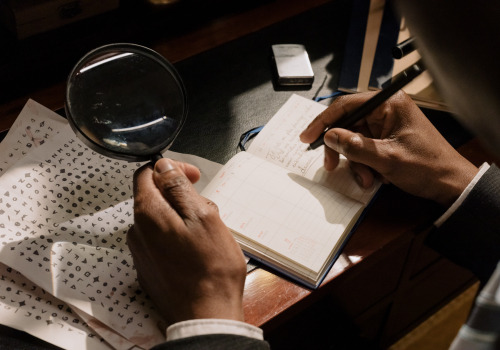
There's many parts involved when writing a scene. Knowing how these different pieces work together may help you move forward in your novel. NaNo Participant Amy de la Force offers some tips on brushing up your scene writing knowledge. Scenes are the building blocks of a novel, the stages where characters spring to life, conflicts brew and emotions run high. Mastering the art of scene writing is crucial for any aspiring writer, especially in the lead-up to NaNoWriMo. But what is a scene, and how do you effectively craft one?
What is a Scene?
A scene is a short period of time — in a set place — that moves the story forward with dramatic conflict that reveals character, generally through dialogue or action. Think of writing a scene as a mini-story with a beginning, middle and end, all contributing to the narrative.
Why Scene Writing is Your Secret Weapon in Storytelling
Well-crafted scenes enhance your story to develop characters, advance the plot, and engage readers through tension and emotion. Whether you're writing a novel, short story or even non-fiction, scenes weave the threads of your story together.
Tip #1: Scenes vs. Sequels
According to university lecturer Dwight Swain in Techniques of the Selling Writer, narrative time can be broken down into not just scenes, but sequels.
Scene
The 3 parts of a scene are:
Goal: The protagonist or point-of-view (POV) character’s objective at the start of the scene.
Conflict: For dramatic conflict, this is an equally strong combination of the character’s ‘want + obstacle’ to their goal.
Disaster: When the obstacle wins, it forces the character’s hand to act, ratcheting up tension.
Sequel
Similarly, Swain’s sequels have 3 parts:
Reaction: This is the POV character’s emotional follow-up to the previous scene’s disaster.
Dilemma: If the dramatic conflict is strong enough, each possible next step seems worse than anything the character has faced.
Decision: The scene’s goal may still apply, but the choice of action to meet it will be difficult.
Tip #2: Questions to Ask Yourself Before Writing a Scene
In Story Genius, story coach and ex–literary agent Lisa Cron lists 4 questions to guide you in scene writing:
What does my POV character go into the scene believing?
Why do they believe it?
What is my character’s goal in the scene?
What does my character expect will happen in this scene?
Tip #3: Writing Opening and Closing Scenes
Now that we know more about scene structure and character considerations, it’s time to open with a bang, or more to the point, a hook. Forget warming up and write a scene in the middle of the action or a conversation. Don’t forget to set the place and time with a vivid description or a little world-building. To end the scene, go for something that resolves the current tension, or a cliffhanger to make your scene or chapter ‘unputdownable’.
Tip #4: Mastering Tension and Pacing
A benefit to Swain’s scenes and sequels is that introspective sequels tend to balance the pace by slowing it, building tension. This pacing variation, which you can help by alternating dialogue with action or sentence lengths, offers readers the mental quiet space to rest and digest any action-packed scenes.
Tip #5: Scene Writing for Emotional Impact
For writing a scene, the top tips from master editor Sol Stein in Stein on Writing are:
Fiction evokes emotion, so make a list of the emotion(s) you want readers to feel in your scenes and work to that list.
For editing, cut scenes that don’t serve a purpose (ideally, several purposes), or make you feel bored. If you are, your reader is too.
Conclusion
From understanding the anatomy of a scene to writing your own, these tips will help elevate your scenes from good to unforgettable, so you can resonate with readers.

Amy de la Force is a YA and adult speculative fiction writer, alumna of Curtis Brown Creative's selective novel-writing program and Society of Authors member. The novel she’s querying longlisted for Voyage YA’s Spring First Chapters Contest in 2021. An Aussie expat, Amy lives in London. Check her out on Twitter, Bluesky, and on her website! Her books can be found on Amazon. Photo by cottonbro studio
#nanowrimo#writing#writing advice#scene writing#writing scenes#plotting#by nano guest#amy de la force
461 notes
·
View notes
Note
HI I JUST SAW YOUR INCREDIBLE SHERLOCK AND CO COMIC YOU MADE AND I WOULD LOVE FOR YOU TO TALK ABOUT THE PROCESS AND THE SYMBOLISM AND INTRICACIES AND EVERYTHING PLEASE ‼️‼️‼️‼️‼️‼️‼️
GOD THANK U ok if i actually talked about EVERYTHING i would be here forever and ever, there were things about the process where it kept surprising me and i kept adding stuff.
I talk about my general comic process here , it started out mostly the same for this one. Analysis of the script, sketches, panel and colour blocking
The scene from Mr Sherlock Holmes presented me with a unique challenge (for me) because...usually I pick scenes from the podcast that are instantly visually stimulating. This scene is NOT that. It's sort of unclear and confusing and even the emotive narrative is sort of hard to pick out. Those things I had to sort of decide for myself. It's hard to draw a whole scene like this without first deciding what the scene is about, what its purpose is. If you go back and listen to the episode along with the comic you'll notice all sorts of changes and tonal shifts - that's because of me and my decision making.
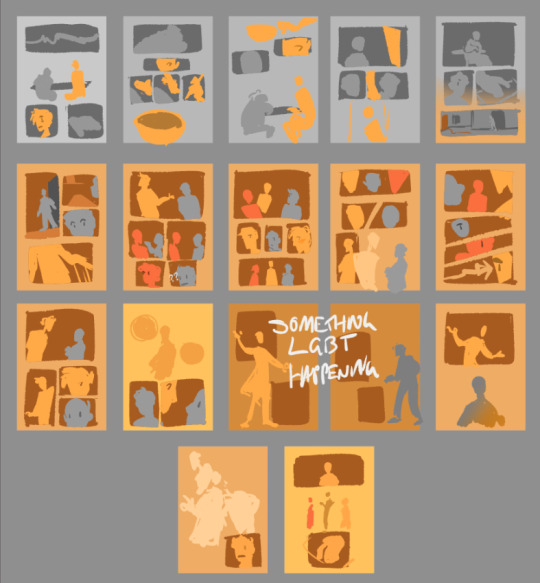
I decided that the direction I wanted to go in was to show John having his realization about himself, his podcast, and Sherlock, showing him getting pulled into, yes, Sherlock's world, but also the world of the podcast as an adaptation. I knew i could do this just with colour, but if you've seen my other comics, you know i almost always use colour to show shifts. I guess I had some insecurity about doing the same thing over and over again so I pushed myself to think of other ways I could accomplish it visual. Enter: rendering technique

I will say I didn't expect this effect to make John seem so SAD and MISERABLE, i only wanted to show him getting pulled in, but its effective for his emotions in this scene as well. Scanning drawings into the computer sort of flattens the paper texture, so I started adding photos of the pages of A Study in Scarlet to make him feel more paper-y. And then, of course, realised i could use that to further elaborate on John's inner thoughts, backgrounds, and motivations. People are welcome to interpreted that how they like and i've seen a number of variations, but to me it operates on sort of a meta level, showing the inevitability of what John is going through. He's a Watson, he's always going to follow Holmes, he's going to try and figure him out, and that's why you sort of see a back and forth between acd and pod Watson, highlighting the ways in which they are similar, and then, John breaks off and becomes his own character, still with those foundations but also entirely different.
there's one piece of text that i haven't seen anyone pick up on or mention and I'm starting to think it's gone unnoticed because it's in an unexpected spot. I won't mention what or where because it is, for now, a very indulgent little secret.
I notice a lot of people are getting a kick out of Sherlock playing with the speech bubbles, which I am so pleased by because I almost didn't do it! I thought i was maybe breaking something in the comic but it was so fun that i didn't care and I'm so glad it came across well. It operates on a lot of levels, it shows his thought process, it plays into that fourth-wall medium play i've got going on, and it feeds into the web metaphor as well as visually showing him roping John in.
on the topic of Sherlock, I feel a lot of people are rather focused on John, which is understandable (he's the main event) but Sherlock has a lot of details I love too.
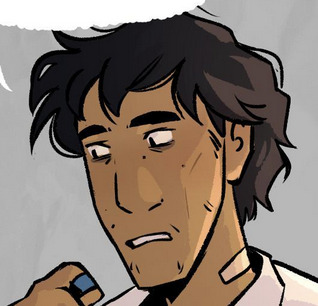
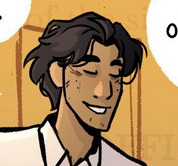

For instance, him pushing his hair back and putting on a coat when the officer arrives, almost like he's shifted modes, and then his hair falling back down when he gets excited and John starts to understand.

I really love this moment of Sherlock seeing John's potential for interest in mysteries when he's trying to solve the matter of what Sherlock Does, and being surprised and flattered for a moment (until John messes it up again)

John copying Sherlock's pose <3
There's deliberate things in the character design as well, things like the fact that once John comes into colour, it reveals that he's actually wearing more colour than anyone else in the scene, and the fact that the grey in John's hair only appears post-greyscale. Things you are welcome to read into. And there are, of course, the socks, which I've seen people pick up on.
Those are the main things for now so i might leave it there, but thank you so much for your ask and i'd be pleased to elaborate further on absolutely anything!
#sherlock & co#sherlock and co#thankuuuu i lvoe yapppingggg#seeing people pick it apart has been so satisfying and validating im so pleased with how it turned out and how people are reacting to it
66 notes
·
View notes
Text
Ways to hit your readers in the gut
When it comes to writing, there's a profound and mesmerizing way to touch your readers deep within their souls. It's about crafting moments that hit them in the gut, stirring up intense emotions and forging an everlasting connection. Here are some techniques to help you achieve this:
1. Unexpected Loss: Introduce a character who captures hearts, only to snatch them away suddenly. Think of J.K. Rowling's "Harry Potter" series, where the abrupt departure of beloved characters like Sirius Black and Fred Weasley leaves readers shattered, their grief a testament to the power of storytelling.
2. Sacrifice for a Cause: Show a character willingly sacrificing their own happiness or even their life for a greater purpose. Suzanne Collins' "The Hunger Games" portrays Katniss Everdeen's selflessness, volunteering as a tribute to save her sister, evoking empathy and admiration.
3. Unrequited Love: Explore the agony of unrequited love, where hearts ache and souls yearn. Charlotte Brontë's "Jane Eyre" delves into the bittersweet and heart-wrenching tale of Jane's unfulfilled affection for Mr. Rochester, resonating with readers who have experienced the profound depths of unrequited longing.
4. Betrayal by a Loved One: Peel back the layers of trust to reveal the sting of betrayal. George R.R. Martin's "A Song of Ice and Fire" series delivers shocking betrayals that shatter readers' expectations, leaving them stunned and heartbroken alongside the characters.
5. Overcoming Personal Demons: Illuminate the struggle against internal conflicts, be it addiction, guilt, or haunting trauma. Anthony Doerr's "All the Light We Cannot See" explores Werner's moral compass during wartime, captivating readers as they witness his battle for redemption and personal growth.
6. Injustice and Oppression: Shed light on the injustices characters endure, igniting empathy and inspiring change. Harper Lee's "To Kill a Mockingbird" reveals the racial prejudice faced by Tom Robinson, awakening readers to the urgent need for justice and equality.
7. Parent-Child Relationships: Navigate the intricate tapestry of emotions between parents and children. Khaled Hosseini's "The Kite Runner" unearths the complexities of the father-son bond, evoking a myriad of feelings, from longing and regret to hope for reconciliation.
8. Final Farewells: Craft poignant scenes where characters bid farewell, whether due to death or separation. Markus Zusak's "The Book Thief" gifts readers with heartbreaking partings amidst the backdrop of World War II, leaving an indelible mark of loss and the fragile beauty of human connections.
9. Personal Transformation: Illuminate characters' growth through adversity, offering a beacon of hope and inspiration. Charles Dickens' "A Christmas Carol" narrates Ebenezer Scrooge's extraordinary journey from a bitter miser to a beacon of compassion, reminding readers that redemption and personal change are within reach.
10. Existential Questions: Delve into existential themes that provoke deep introspection. Albert Camus' "The Stranger" challenges readers to ponder the meaning of life through Meursault's detached and nihilistic worldview, prompting them to question their own existence.
With these techniques, you have the power to touch your readers' souls, leaving an indelible impression. Remember to weave these moments seamlessly into your narrative, allowing them to enrich your characters and themes. Let your words resonate and ignite emotions, for that is the essence of impactful storytelling.
#writing#writing tips#character development#writer on tumblr#writerscommunity#writer tumblr#writblr#writing advice#oc character#writing block#writing habits#writing help#writersociety#fanfic
1K notes
·
View notes
Text



It is time again to respond yeaaah....sigh
Let's start:
Wednesday does not become a “permanent presence” at Weathervane.
Wednesday goes there on very few occasions and always with a specific purpose: to investigate or get logistical help (as in the case of the escape from Nevermore).
There is no concrete hint, either in the plot or in the dialogue, that suggests frequent “off-screen” encounters.
The fact that Tyler buys her a drink is not evidence of romantic hookups, but is part of an attempt on his part to appear to be the reliable “good guy,” an intentional narrative mechanism that serves to build trust in the viewer before his true role is revealed.
In addition, it is important to understand that the scenes between them are intentionally coded as romantic at first.
But this does not mean that the series wants to build a “healthy” love story:
it is a classic narrative technique of romantic red herring-it creates the illusion of a possible love interest only to subvert it dramatically.
Tyler's betrayal is much more shocking precisely because it seemed sweet. Had he been suspicious from the start, the revelation of his Hyde identity would have had much less impact.
On the subject of gaslighting, one must be precise.
Gaslighting is not just “telling huge lies”-it is distorting the other person's perception of reality in a subtle, continuous way to confuse, manipulate, and control.
When Tyler tells Wednesday things like “I thought you liked me” while he knows full well that he is hiding the truth from her-and that he is involved in brutal murders-he is engaging in a severe form of gaslighting.
He builds a false narrative of complicity, intimacy and trust to weaken Wednesday's ability to suspect him.
This is not “romance,” it is heavy emotional manipulation.
And those who downplay this not only miss the narrative point, but also underestimate how much real damage gaslighting can do.
In real life, victims of gaslighting often:
•Begin to doubt their memory, perception and mental clarity;
•Lose confidence in themselves;
•Become easier to isolate and control;
•Take a long time to recognize the manipulation they have suffered, often feeling guilty about natural emotions.
To say that “Wednesday would have found it pleasant” to be gaslighted by Tyler, as the post claims, is deeply disrespectful both to the character and to the real victims of psychological abuse.
Wednesday Addams is not a weak or clueless girl, but she is human: she can be fooled by those who play allies well.
(Once again a stereotype is carried forward, even a rather sad one, of the “gothic” girl who has no feelings, thus seeing Wednesday as a kind of two-dimensional character or one-dimensional character.)
And the fact that, once she discovers the betrayal, she completely cuts him out of her life without any hesitation shows her strength of character-not that she “liked” being treated that way.
Regarding the “if Wednesday really was using Tyler, he was entitled to the truth” speech:
• Tyler is not entitled to anything from her, since he was the one who lied first and in an infinitely more serious way.
• Their relationship was not defined: they were not engaged, nor had Wednesday promised anything.
To ask for “honesty” when you yourself are plotting behind the other's back is the height of hypocrisy as far as I am concerned.

Finally, it should be reiterated that Wednesday is never really in love with Tyler.
There is perhaps an initial liking, a curiosity, but never emotional abandonment or blind trust.
The “kiss” they exchange is not the crowning of a love: it is a narrative test.
Soon after, Wednesday senses that something is wrong-her instincts guide her to the truth.
If Tyler had been really important to her on a sentimental level, her reaction to the betrayal would have been laden with anguish or inner conflict.
Instead, there is no hesitation: there is anger, a sense of justice, clarity. Wednesday immediately takes the situation back into her own hands.
So...?
There is no evidence that Wednesday and Tyler had an intense off-screen relationship.
The “romantic” scenes were a narrative trap for the audience, not the basis of a real ship.
Tyler was gaslighting Wednesday, and downplaying this fact is irresponsible and dangerous.
Wednesday never acted like a passive victim, nor did she find pleasure in being betrayed.
To defend W*yler ship by ignoring these elements is to disrespect neither the writing of the series nor the important themes it touches on (such as emotional manipulation).
Downplaying psychological abuse to defend a ship is deeply wrong.
But weren't you the ones who told us that we had to "feel sorry" for Tyler for what happened to him?
Wednesday is also a victim and stop treating her like a walking stereotype.
Either we analyze both or we just cherry pick

An additional critical element in the analysis of the relationship between Wednesday and Tyler concerns the phenomenon of victim blaming.
Seeing how the author of the post has reasoned, I should explain better what VB is to be sure
Victim blaming occurs when, consciously or unconsciously, the victim of abuse or manipulation is attributed some of the responsibility for the incident, reversing the correct attribution of blame. This is a well-documented dynamic in psychological and social contexts, with profoundly damaging effects on the public perception of victims and their own ability to process the trauma they have suffered.
In the case of Wednesday, part of the fandom and some commentators tend to interpret the story of Wednesday and Tyler in a distorted way, suggesting that Wednesday could not have been manipulated, or even that she would have found pleasure in the dynamic established.
This reading is based on a number of erroneous assumptions:
• That an individual's character strength, intelligence, or cynicism makes him or her invulnerable to emotional manipulation;
•That the display of trust or openness toward another is in itself a form of culpability.
In fact, as numerous studies in the field of psychology have shown, anyone can be a victim of gaslighting or other forms of emotional abuse, regardless of one's mental strength or analytical skills.
Manipulation creeps right into trust, hope for authenticity, and is often calibrated to the individual's emotional weaknesses. In this sense, Wednesday's behavior-which, while maintaining her natural distrust, allows Tyler an edge of trust-does not constitute a mistake or a fault, but an expression of her growth and her willingness to make connections.
The betrayal she suffered does not make her any less strong; on the contrary, her immediate and sharp reaction, once she realizes the truth, testifies to her resilience.
Moreover, from a methodological point of view, it is crucial to stress the importance of analytical consistency.
While one is rightly inclined to recognize in Tyler a potential victim-for example, of his own traumas, her mother, or the pressure of external forces-it is likewise necessary, for the sake of intellectual fairness, to acknowledge that Wednesday, too, was a victim of deception and affective manipulation.
Choosing to analyze Tyler's character with empathy, while denying any form of vulnerability to Wednesday, constitutes a clear example of analytical cherry picking: only data functional to a predetermined thesis are selected, ignoring those that contradict it.
This lack of rigor damages not only the critical analysis of the series, but also the understanding of the deeper themes it addresses: trust, betrayal, personal growth, and the ability to resist manipulation.
To minimize Wednesday's experience is not only to misunderstand the complexity of her character, but also to perpetuate a toxic culture in which victims are seen as guilty of their own traumas, based on stereotypes or unrealistic expectations.
To conclude all of this talk, to fully respect the narrative and maintain an honest and respectful analysis in the context of this post, it is necessary to acknowledge that Wednesday Addams, even in her strength, has also been emotionally abused and deserves the same consideration and dignity that is accorded to other characters.
To deny this is not only unfair: it is methodologically incorrect.
Just as it is fair to consider Tyler ALSO a victim, Wednesday is also to be considered a victim of deception.
Eh yes, just because I don't like the character and the ship doesn't mean I don't recognize the abuse that guy had.
In conclusion and REPEAT IT AGAIN
Tyler deceived Wednesday, he PRETENDED that the girl recognized "signs" and got angry when she did not recognize them.
This is not healthy and here Wednesday is a victim.
Thank you and goodbye.
SEE YOU SPACE

29 notes
·
View notes
Text
Balancing Show and Tell in Writing
I’ve touched on this topic before, but in this post, I’ll dive deeper into the art of balancing show and tell. If you’re just starting out or looking to refine your writing skills, you’ve come to the right place!
Showing and telling is a fundamental aspect of writing because it forms the building blocks of an effective plot. When done well, it gives your story its purpose and immerses your readers in the world you’ve created. Below, we’ll explore what it means to tell and to show, along with tips for finding the right balance.
Examples of Telling
Telling statements are simple and factual, but they lack depth and engagement. For example:
- The wind blew.
- The grass grew.
- The sky changed color.
- That person smelled bad.
These statements merely relay information and don’t evoke much emotion or imagery. While they serve a purpose in writing, overusing them can make your story feel flat.
Examples of Showing
Showing statements, on the other hand, add vivid detail and context, helping readers visualize the scene and feel connected to it. For instance:
- The wind blew through my hair as I walked to work.
- The grass had grown a foot since my last visit—it was nearly up to my knees.
- The sky shifted from blue to a breathtaking mix of purple and pink.
- My teammate smelled of sweat after practice.
These examples provide depth and allow readers to experience the moment with the character. By showing rather than simply telling, you invite readers into your story and keep them engaged.
How to Balance Show and Tell
Balancing show and tell is crucial to your story’s success. Knowing when to show and when to tell will help you create a dynamic, compelling narrative. Here are some tips:
- Dialogue: When characters talk about past experiences, telling can work well—it’s often the natural way people communicate. However, if you want a character to help others visualize the moment, consider blending show and tell.
- Scenes: For characters experiencing something new or stepping into a different environment, showing is key to immersing your readers. Use sensory details and actions to paint a vivid picture.
- Efficiency: Sometimes, telling is more effective for moving the plot forward. For example, a brief, factual statement can help bridge scenes without bogging down the narrative with unnecessary detail.
Balancing show and tell might feel challenging at first, but as with any writing skill, practice makes perfect.
Show and Tell Used Effectively
Want to see show and tell in action? One of the best ways to observe this balance is through horror movies or books. These genres often rely on both techniques to build suspense and deliver emotional impact. For instance, a horror film might show a character nervously glancing over their shoulder (visualizing fear) and then tell us their internal thoughts (“Something didn’t feel right”).
Conclusion
Show and tell are essential tools for crafting memorable stories. Knowing when to show and when to tell can elevate your writing, making it more engaging and impactful. Remember, showing immerses your readers in the moment, while telling keeps the narrative focused and clear. Mastering this balance takes time, but with practice, you’ll find your rhythm.
Happy writing!
#writing tips#show dont tell#creative writing#storytellingadvice#writerslife#amwriting#writing skills#fiction writing#writing community#writing process#writingjourney#character development
30 notes
·
View notes